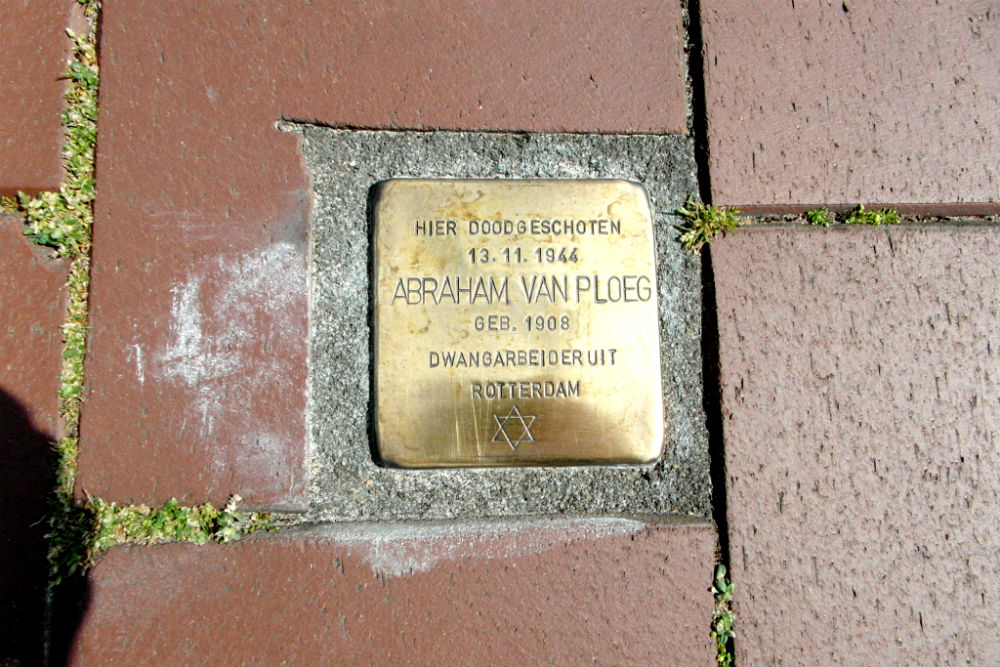Stumbling Stone IJsselkade/Van Heutzplein
This small, brass, memorial plaque (Stolperstein or stumbling stone) commemorates Abraham van Ploeg.
* Here was shot 13 November 1944
Abraham van Ploeg, born 1908, forced laborer from Rotterdam.
In 1929, Abraham van Ploeg, a metal worker, married Helena Maria Duiker, a Roman Catholic. They had 3 daughters, one of whom died as an infant. At the beginning of the war, they lived at Jacominastraat 24 in South Rotterdam, and he was registered as a shipping agent. Later he had to wear the Jewish star and he no longer had work. In July 1944, men were required to report for forced labor.
On 11-12 November 1944, there was a large raid in Rotterdam, during which about 52,000 of the 70,000 Rotterdam men ages 17-40, including Abraham van Ploeg, were arrested to be used as forced laborers. They were taken in Rhine barges and arrived at the Kampen wharf. A German officer saw Bram's star, shot him in cold blood, and kicked him into the water. He was seriously wounded and he drowned while his fellow Rotterdam citizens helplessly watched. He was 35.
"Stolpersteine" is an art project for Europe by Gunter Demnig to commemorate victims of National Socialism (Nazism). Stolpersteine (stumbling stones) are small, 10x10cm brass plaques placed in the pavement in front of the last voluntary residence of (mostly Jewish) victims who were murdered by the Nazis. Each plaque is engraved with the victim’s name, date of birth, and place (mostly a concentration camp) and date of death. By doing this, Gunter Demnig gives an individual memorial to each victim. One stone, one name, one person. He cites the Talmud: "A human being is forgotten only when his or her name is forgotten."
For more information and pictures, please visit Stolpersteine Kampen (in Dutch).
Do you have more information about this location? Inform us!
Source
- Text: Fedor de Vries & Anne Palmer
- Photos: Joop van Dijk (1), Arie Bervoets (2)
- Joods Monument
- Struikelstenen in Kampen
- Joodserfgoedrotterdam: Abraham van Ploeg
- Geni.com
- Stolpersteine.eu
Nearby
Point of interest
Monument
- Memorial Stone Albert Knipmeijer - Kampen
- Monument "Smekende Handen", Kampen - Kampen
- Jewish Memorial Kampen - Kampen
Cemetery
- Dutch War Graves Roman Catholic Cemetery IJsselmuiden - IJsselmuiden
- Commonwealth War Graves IJsselmuiden - IJsselmuiden
- Dutch War Graves IJsselmuiden - IJsselmuiden
Remembrance Stone
- Stumbling Stone Oudestraat 155 - Kampen
- Stumbling Stones Gasthuisstraat 7 - Kampen
- Stumbling Stone Oudestraat 133 - Kampen




